Frost-heave properties of saturated compacted silty clay under one-side freezing condition
HongYan Ma, Feng Zhang, DeCheng Feng, KangWei Tang
1. College of Civil Engineering, Fuzhou University, Fuzhou, Fujian 350116, China
2. School of Transportation Science and Engineering, Harbin Institute of Technology, Harbin, Heilongjiang 150090, China
Frost-heave properties of saturated compacted silty clay under one-side freezing condition
HongYan Ma1,2*, Feng Zhang2, DeCheng Feng2, KangWei Tang2
1. College of Civil Engineering, Fuzhou University, Fuzhou, Fujian 350116, China
2. School of Transportation Science and Engineering, Harbin Institute of Technology, Harbin, Heilongjiang 150090, China
In seasonally frozen regions, the frost-heave properties of soil play a significant role in its upper-structure performance and durability. To investigate the frost-heave behaviors of saturated, compacted silty clay soil widely used as subgrade material, a series of one-side freezing tests was carried out; and the freezing depth and frozen front effected by the compactness, temperature, overburden pressure, and water-supply condition were analyzed and discussed. The results show that the moving speed of the frozen front and growth rate of the frozen depth are positively correlated. The frost heave is maximum in the frost-heave stability condition. The frost ratio of saturated soil is proportional to the water supply and cooling temperature under a one-side freezing condition. The frost ratio of saturated soil is inversely proportional to the initial compactness of the soil specimen and the overburden pressure.
seasonally frozen regions; saturated silty clay soil; frost heave; freezing front; factor-sensitivity analysis
1 Introduction
In seasonally frozen regions, the subgrade and foundation soil is frozen in winter because of the lasting minus temperature; and too much frost-heave deformation or frost force affects the structure's performance and durability. Generally, the frost heave of soil is determined by the distribution of temperature and moisture, by the stress state, and by the interaction of these factors. Different soils exhibit different frost-heave properties under different environments.
As the most effective method to study the frostheave deformation and force behavior of soil, frostheave devices were designed and tests conducted to investigate the frost-heave characteristics of soil. Guthrie and Hermansson (2003) and Hermansson (2004) obtained frost-heave and water-migration characteristics of silty clay during the freezing process. Heet al. (2012) investigated the effects of temperature distribution, water migration, and frost heave of composite fillings under freezing, and analyzed the mechanism of frost-heave damage of composite fillers. Darrowet al. (2008) and Wanget al. (2014) confirmed by experiments that the clay content is the most sensitive factor of frost heave and pointed out that the soil could have no more than 9% fine-grain particles effectively reduce the frost heave. Wuet al. (2011) studied the effects of the initial water content on the frozen-front edge in the freezing process of soil. Zhouet al. (2011) studied the frost-heave process of silty clay under an open system without applying a load. Zhou and Zhou (2012) found that the frost heave volume in intermittent freezing is only 48.8% of that in continuous freezing. Azmatchet al. (2012) estab-lished the soil-freezing characteristic curve (SFCC), characterizing the change of unfreezing water content with substrate suction. Yanet al. (2013) monitored the frost-heave and thaw-settlement characteristics of silty sand during freeze–thaw cycles by a one-dimensional, freezing–thawing device. Zhouet al. (2016) established the frost-heave rate increases proportionally with the temperature gradient, when the temperature is quasi-steady; and the frost-heave rate increases with the specific freezing rate, in the form of a power law, when the temperature is unsteady. These studies did not consider the influences of applied axial loads on frost heave. Recently, Tianet al. (2010) and Huet al. (2011) pointed out that the static load and dynamic load on the soil frost heave are inhibited. Laiet al. (2014) studied the water–heat–force interaction of saturated frozen silty clay by a one-dimensional, freeze–thaw cycling test. Maet al. (2016) found that the temperature gradient, cooling temperature, and overburden are inversely proportional to frost heave; and the compactness is proportional to frost heave. However, the frost-heave tests were not perfect, in terms of correlation with overburden press, temperature, and water supply.
In the freezing process of soil, the temperature distribution and frost-heave growth are the basis for the analysis of frost-heave properties. To investigate the frost-heave behaviors of compacted silt soil, a series of frozen heave tests were conducted; four influences (compactness, temperature, overburden pressure, and water-supply condition) were studied; and the frost-heave properties of saturated soil were analyzed.
2 Materials and methods
The soil used in the present study is a kind of subgrade material widely used for highway construction in Heilongjiang Province, China. The physical properties of silty clay were determined according to theTest Methods of Soils for Highway Engineering(JTG E40-2007). The specific gravity was 2.75, liquid limit 36.98%, plastic limit 25.19%, and plasticity index 11.79. The maximum dry density was 1.82 g/cm3, and optimum water content was 17.4%. Figure 1 shows the grain-size distribution. As shown in Figure 1, the proportion of particles smaller than 0.075 mm was about 94.7%.
To simulate the environmental freeze process, a frost-heave test device with topdown thermal transfer was used; and four heat-insulation rings were designed to restrict lateral deformation and allow vertical movement. The setup of the frozen-heave test is shown in Figure 2. The cooling temperature, warming temperature, overburden pressure, and water-supply condition were produced to simulate the environmental conditions in seasonally frozen regions. All testing specimens were prepared to measure 100 mm in diameter and 150±5 mm in height. To test the temperature changes of soil in the vertical direction during the freezing process, seven T-type thermocouples were inserted into the soil samples; and the data were measured and recorded by the Datataker. Test groups for frost heave are shown in Table 1.
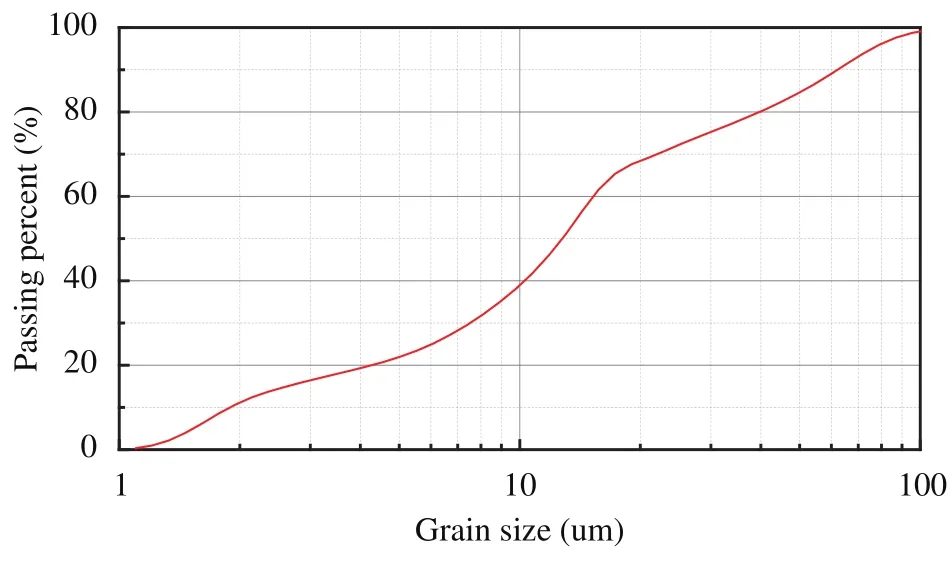
Figure 1 Grain-size distribution curve of the silty clay
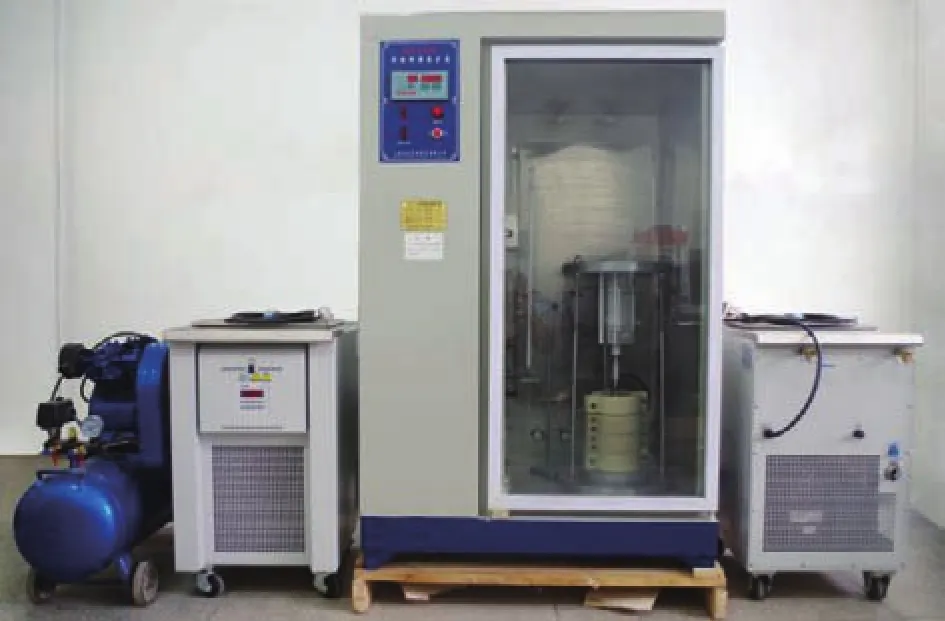
Figure 2 The setup of frost-heave test (Ma, 2015)
3 Results and discussion
3.1 Frost front and frost heave
According to the temperature distribution with time in the freezing process, the changes of the frozen front and freezing depth with time were obtained by an interpolation method. Figure 3 shows curves of the frozen front edge and frozen depth with time under the freezing condition. It can be seen that as the freezing time increases, the frozen front moves gradually from top to bottom. During the early freezing processing, the freeze front edge moves at high speed and then reduces gradually. The frozen depth increases with the increasing of freezing time, and the increasing ratio at the early part of the freezing stage is great-er than later in the freezing stage. The frozen depth and frozen front reach stability at the end of freezing process. It may be due to the heat balance, which is from the positive temperature energy at the bottom of the sample and the negative temperature energy at the top.

Table 1 Characteristics of soil specimens in the frost-heave test
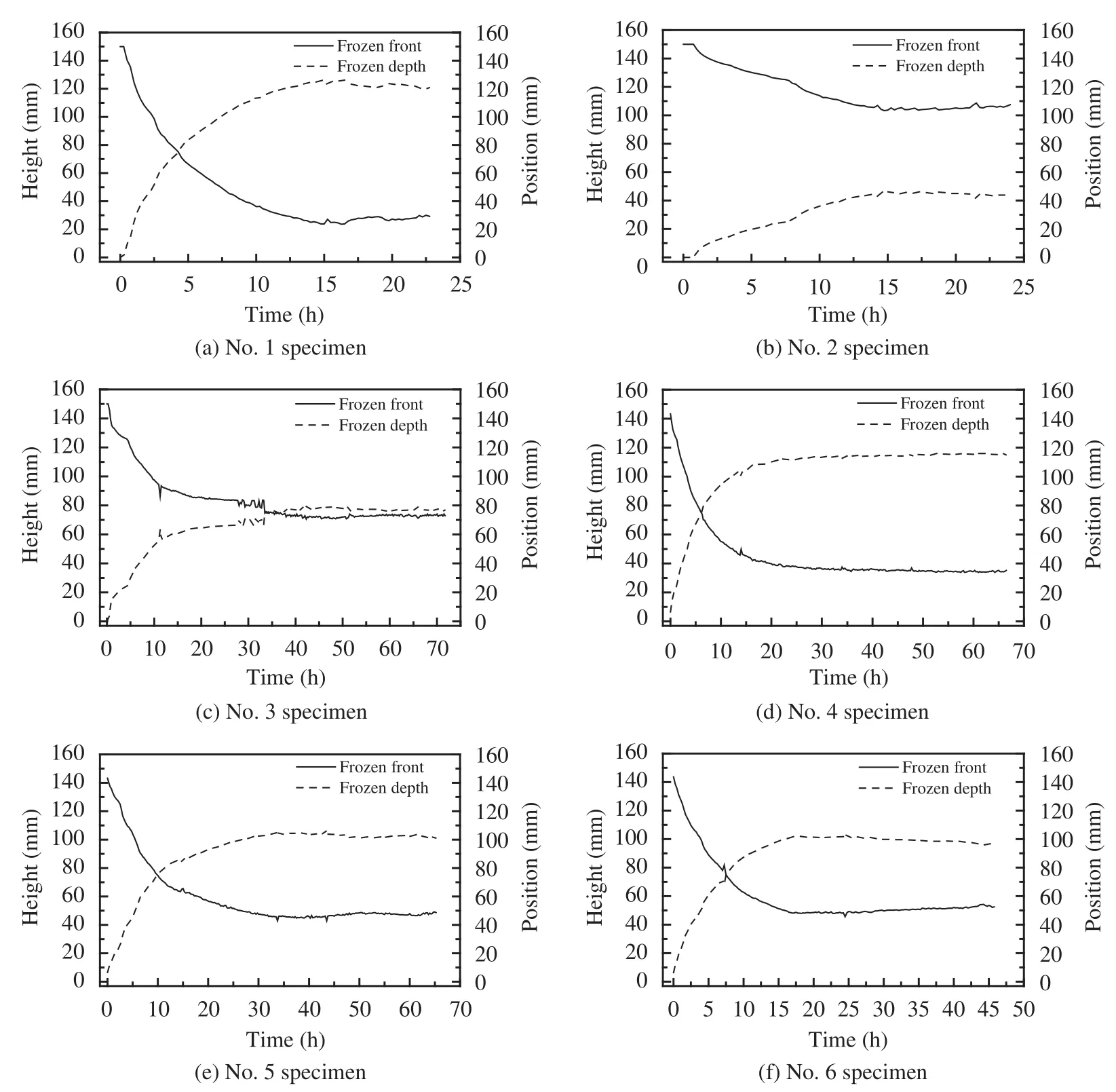
Figure 3 Curves of frozen front edge and frozen depth with time under the freezing condition
The frozen front moves down as the frozen depth increases. The coordinate of the frozen front equals the height of the specimen minus the frozen depth. One can note that in Figure 3 the moving speed of the frozen front is at the maximum when the growth rate of the frozen depth is at the maximum in the early part of the freezing stage. So the moving speed of the frozen front and the growth rate of the frozen depth are positively correlated. The frozen front and the frozen depth of a soil specimen are related to the cooling temperature, compactness, overburden pressure, and water-supply condition. The soil freezing process is influenced by the combined action of multiple factors, including temperature, moisture, materials, and pressure condition.
Figure 4 shows the frost heave and frost ratio of saturated silty clay under the one-side freezing condition. Note that the frost heave (41 mm) of the No. 3 specimen and the frost ratio (50%) of the No. 2 specimen are maximal, respectively. The frost-heave sensitivity of soil is different under different test conditions, the result of the combined effects of the material and the environment. The frozen depth, frost heave, and frost ratio are directly related to the experimental conditions. Therefore, this paper is proposed to analyze the single-factor sensitivity of soil frost heave under the one-side freezing condition.

Figure 4 The frost heave and frost ratio under different conditions
3.2 Effect of water supply
Figure 5 shows the frozen depth, frost heave, and frost ratio of saturated soil specimens under different water-supply conditions. From this figure, one can see the following: (1) The more sufficient the water supply, the smaller the frozen depth of the soil specimen. But the variation of freezing depth is small. In Figure 5a, the frozen depth of the No. 4 specimen (116 mm) is smaller than that of the No. 1 specimen (121 mm). In Figure 5b, the frozen depth of the No. 10 specimen (111 mm) is smaller than that of the No. 12 specimen (117 mm). The main reason for these differences is that the released heat of phase change weakens the freezing action. Therefore, the water content is inversely proportional to the frozen depth during the freezing process. (2) The more sufficient the water supply, the greater the frost heave. In Figure 5a, the frost heave of the No. 1 specimen (9 mm) is smaller than that of the No. 4 specimen (33 mm). In Figure 5b, the frost heave of the No. 12 specimen (5 mm) is smaller than that of the No. 11 specimen (26 mm). The reason is that the ice lenses among soil particles are related to migration water content during the freezing process. (3) The more sufficient the water supply, the greater the frost ratio. In Figure 5a, the frost ratio of the No. 1 specimen (7%) is smaller than that of the No. 4 specimen (27%). In Figure 5b, the frost ratio of the No. 12 specimen (4%) is smaller than that of the No. 11 specimen (23%). These findings indicates that controlling the water supply in the freezing process could effectively reduce the frost heave of soil specimens.
3.3 Effect of cooling temperature
Figure 6 shows the frozen depth, frost heave, and frost ratio of saturated soil specimens under different cooling-temperature conditions. It shows that the lower the cooling temperature, the greater the frozen depth and the frost ratio of the soil specimen. In Figure 6a, the frozen depth (83 mm) and frost ratio (35%) of the No. 7 specimen are greater than the frozen depth (44 mm) and frost ratio (28%) of the No. 8 specimen, respectively. In Figure 6b, the frozen depth (104 mm) and frost ratio (35%) of the No. 5 specimen is greater than the frozen depth (90 mm) and frost ratio (29%) of the No. 11 specimen, respectively. Because the sensitivity of frost heave is proportional to the cooling temperature, the strengthening coldprotection measures could effectively reduce the frost-heave problem in the engineering practice.
3.4 Effect of compactness
Figure 7 shows the frozen depth, frost heave, and frost ratio of saturated soil specimens under different compactness condition. It shows that the initial compactness is negatively related to the frost ratio of saturated soil. In Figures 7a and 7b, the frost ratio of the No. 6 specimen (32%) and the No. 9 specimen (17%) are greater than that for No. 6 the No. 4 specimen (14%). The effects of soil compactness on frost heave are explained as follows: The compactness changes the thermal parameters of the soil and affects the movement of the frozen front and the freezing process of the soil specimen. The compactness changes the initial porosity of the soil specimen and affects thelatent-heat release during the freezing process. The compactness changes the permeability coefficient of soil, which affects the water migration during soil freezing process.
First, the greater the compactness, the greater the thermal conductivity of the soil and the volume heat capacity, the smaller the frozen depth of the soil specimen. Second, the greater the compactness, the less the pore-water content and the faster the freezing action. Finally, the greater the compactness, the smaller the permeability coefficient and the water migration and frost heave of the soil specimen.
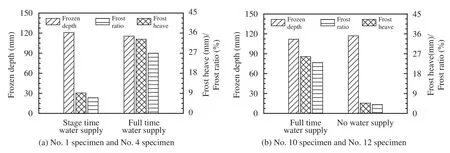
Figure 5 The characteristics of frost heave under different water-supply conditions

Figure 6 The characteristics of frost heave under different cooling temperatures
3.5 Effect of overburden pressure
Figure 8 shows the frozen depth, frost heave, and frost ratio of saturated soil specimens under different overburden pressure conditions. One can see that the overburden pressure and frost ratio are inversely proportional. In Figures 8b and 8c, the frost ratios of the No. 7 specimen (35%) and the No. 8 specimen (28%) are greater than the frost ratio of the No. 9 specimen (17%). The greater the overburden pressure, the weaker the water migration in the freezing process, the smaller the frost heave of the soil specimen. Overburden pressure suppresses the development of frost heave.
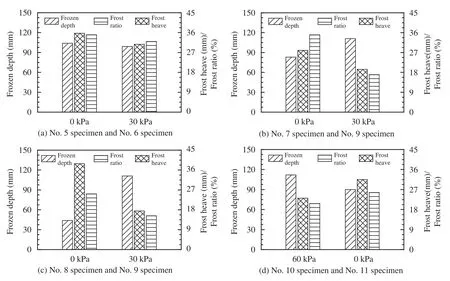
Figure 8 The characteristics of frost heave under different overburden pressures
From Figures 5 to 8, it can be seen that the frost ratio of saturated soil is proportional to the water supply and the cooling temperature under the one-side freezing condition. And the frost ratio of saturated soil is inversely proportional to the initial compactness of the soil specimen and the overburden pressure.
4 Conclusions
A series of one-side freezing tests of compacted silty clay was conducted; and the frost-heave properties affected by the compactness, temperature, overburden pressure, and water-supply condition were analyzed and discussed. The conclusions are as follows:
(1) The maximum frost heave was 41 mm and the maximum frost ratio 50% for saturated, compacted silty clay soil under the one-side freezing condition.
(2) The moving speed of the frozen front was positively related with the growth rate of the frozen depth. The frost heave is maximum under the frostheave stability condition.
(3) The frost ratio of saturated soil is proportional to the water supply and cooling temperature under the one-side freezing condition. And the frost ratio of saturated soil is inversely proportional to the initial compactness of the soil specimen and the overburden pressure.
Acknowledgments:
This research is supported by the National Key Basic Research Development Plan (2012CB026104), the National Natural Science Foundation of China (Nos. 51408163 and 51578200), the Natural Science Foundation of Heilongjiang Province (No. ZD201218), and the Research Foundation of Fuzhou University (510406).
Azmatch TF, Sego DC, Arenson LU,et al., 2012. New ice lens initiation condition for frost heave in fine-grained soils. Cold Regions Science and Technology, 82: 8–13. DOI: 10.1016/j.coldregions. 2012.05.003.
Darrow MM, Huang SL, Shur Y,et al., 2008. Improvements in frost heave laboratory testing of fine-grained soils. Journal of Cold Regions Engineering, 22(3): 65–78. DOI: 10.1061/(ASCE)0887-381X(2008)22:3(65).
Guthrie WS, Hermansson A, 2003. Frost heave and water uptake relations in variably saturated aggregate base materials. TransportationResearch Record: Journal of the Transportation Research Board, 1821(1): 13–19. DOI: 10.3141/1821-02.
He ZY, Deng A, Wang HB,et al., 2012. Investigation of moisture transfer and frost heave of composite geofoam under frost condition. Journal of Building Materials, 5: 703–706, 729. DOI: 10.3969/j.issn.1007-9629.2012.05.023.
Hermansson A, 2004. Laboratory and field testing on rate of frost heave versus heat extraction. Cold Regions Science and Technology, 38(2): 137–151. DOI: 10.1016/j.coldregions.2003.10.002.
Hu K, Zhou GQ, Li XJ,et al., 2011. Experiments on frost heave of artificial frozen soils with different constraints. Journal of China Coal Society, 36(10): 1653–1658.
Lai YM, Pei WS, Zhang MY,et al., 2014. Study on theory model of hydro-thermal-mechanical interaction process in saturated freezing silty soil. International Journal of Heat and Mass Transfer, 78(5): 805–819. DOI: 10.1016/j.ijheatmasstransfer.2014.07.035.
Ma HY, 2015. Experimental study on frost heave of saturated subgrad silty clay in seasonal frozen region. Harbin Institute of Technology Dissertation for the Doctoral Degree, pp. 53.
Ma HY, Zhang F, Feng D,et al., 2016. Experimental study on frost heave of saturation silty clay under one side freezing. Journal of Building Materials, 5: 926–932. DOI: 10.3969/j.issn.1007-9629. 2016.05.024.
Tian Y, Liu J, Peng LY,et al., 2010. Experimental study on frost action of fine-grained soils under dynamic and static loads. Chinese Journal of Geotechnical Engineering, 32(12): 1882–1887.
Wang TL, Yue ZR, Ma C,et al., 2014. An experimental study on the frost heave properties of coarse grained soils. Transportation Geotechnics, 1(3): 137–144. DOI: 10.1016/j.trgeo.2014.06.007.
Wu LZ, Xu Q, Huang RQ,et al., 2011. Analysis of freezing-thawing test process of unsaturated clay. Rock and Soil Mechanics, 4: 1025–1028.
Yan H, Wang TL, Liu JK,et al., 2013. Experimental study of repeated frost heave and thaw settlement properties of silty sand. Rock and Soil Mechanics, 11: 3159–3165.
Zhou JS, Zhou GQ, Zhang Q,et al., 2011. Application of image processing in researches on evolving rules of segregation ice. Chinese Journal of Geotechnical Engineering, 33(1): 123–127.
Zhou JZ, Wei CF, Li DQ,et al., 2016. Experimental study and numerical simulation for the process of frost heave in saturated silt. Chinese Journal of Rock Mechanics and Engineering, 9: 1–11.
Zhou Y, Zhou G, 2012. Intermittent freezing mode to reduce frost heave in freezing soils-experiments and mechanism analysis. Canadian Geotechnical Journal, 49(6): 686–693. DOI: 10.1139/t 2012–028.
:Ma HY, Zhang F, Feng DC, et al., 2017. Frost-heave properties of saturated compacted silty clay under one-side freezing condition. Sciences in Cold and Arid Regions, 9(3): 0273–0279.
10.3724/SP.J.1226.2017.00273.
November 26, 2016 Accepted: December 26, 2016
*Correspondence to: HongYan Ma, Ph.D., assistant professor, Fuzhou University, No. 2, Xueyuan Street, Fuzhou 350116, China. Tel: +86-13003829587; E-mail: mhyhit@163.com
 Sciences in Cold and Arid Regions2017年3期
Sciences in Cold and Arid Regions2017年3期
- Sciences in Cold and Arid Regions的其它文章
- Laboratory and field performance of recycled aggregate base in a seasonally cold region
- Laboratory investigations of the thermal strain of frozen soils, using fiber-optic strain gauges based on Bragg gratings
- Subgrade-reinforcement techniques for the dangerously deforming sections of railway lines in the north of the Russian Far East
- Systematization of features and requirements for geological survey of railroad subgrades functioning in cold regions
- Application of a nondestructive method to evaluate the active layer in a cold region
- Soil freezing process and different expressions for the soil-freezing characteristic curve
